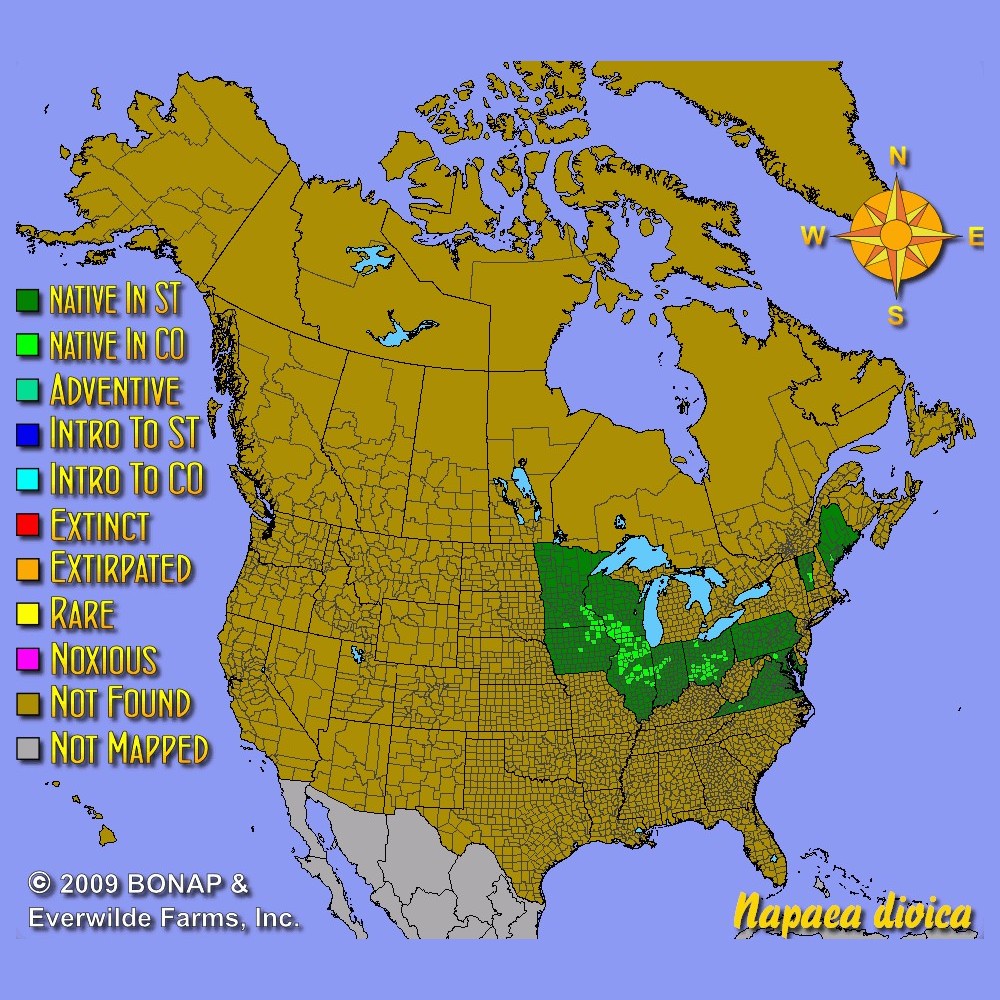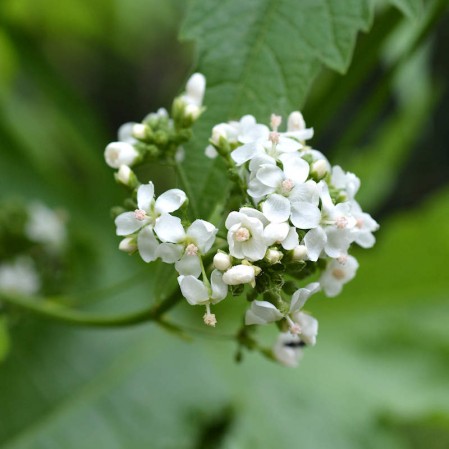Glade Mallow Seeds
Napaea dioica
- HOW TO GROW
- FAST FACTS
HOW TO GROW
Sowing: Direct sow in late fall, planting the seed below the surface of the soil since this seed needs darkness to germinate. For spring planting, mix the seeds with moist sand and store in the refrigerator for 60 days before planting. Keep the soil lightly moist until germination. This seed can also be started indoors 6-8 weeks before planting in the spring.
Growing: Keep both young and mature plants moist, since this plant appreciates constantly moist but well-draining soil. The leaves quickly wilt if the soil becomes dry. Since the stems of this plant can be damaged by wind, plant in a somewhat protected location.
Harvesting: For cut flowers, choose stems with flowers that have just opened. Strip the foliage that will fall below the water level, and place in water immediately.
Seed Saving: After blooming, the female flowers of this plant will produce small rounded clusters that contain 6-8 seeds each. Collect them as soon as the seeds have begun to turn brown, since the clusters will eventually loosen and drop their seed. Store the seeds in a cool, dry place.
FAST FACTS
Latin Name: Napaea dioica
Species Origin: US Native Wildflower
Type: Native Wildflowers
Life Cycle: Perennial
USDA Zones: 4, 5, 6
US Regions: Midwest, Northeast
Seeds per Ounce: 4,900
Stratification: Cold/Wet for 8 Weeks
Germination Ease: Stratify 8 Weeks
Sunlight: Full Sun, Part Sun
Height: 80 Inches
Color: White
Bloom Season: Blooms Early Summer, Blooms Late Summer
DESCRIPTION

HOW TO GROW
Sowing: Direct sow in late fall, planting the seed below the surface of the soil since this seed needs darkness to germinate. For spring planting, mix the seeds with moist sand and store in the refrigerator for 60 days before planting. Keep the soil lightly moist until germination. This seed can also be started indoors 6-8 weeks before planting in the spring.
Growing: Keep both young and mature plants moist, since this plant appreciates constantly moist but well-draining soil. The leaves quickly wilt if the soil becomes dry. Since the stems of this plant can be damaged by wind, plant in a somewhat protected location.
Harvesting: For cut flowers, choose stems with flowers that have just opened. Strip the foliage that will fall below the water level, and place in water immediately.
Seed Saving: After blooming, the female flowers of this plant will produce small rounded clusters that contain 6-8 seeds each. Collect them as soon as the seeds have begun to turn brown, since the clusters will eventually loosen and drop their seed. Store the seeds in a cool, dry place.
FAST FACTS
Latin Name: Napaea dioica
Species Origin: US Native Wildflower
Type: Native Wildflowers
Life Cycle: Perennial
USDA Zones: 4, 5, 6
US Regions: Midwest, Northeast
Seeds per Ounce: 4,900
Stratification: Cold/Wet for 8 Weeks
Germination Ease: Stratify 8 Weeks
Sunlight: Full Sun, Part Sun
Height: 80 Inches
Color: White
Bloom Season: Blooms Early Summer, Blooms Late Summer





